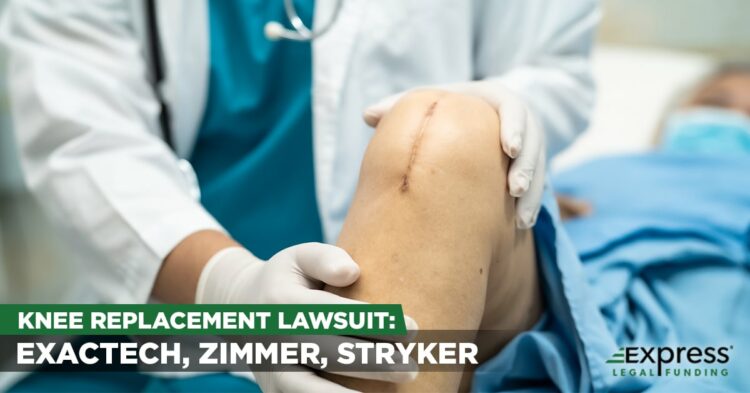
Did you know that medical errors are estimated to cause over 250,000 deaths in the US annually? To put that into perspective, that’s nearly one medical malpractice-related fatality for every 100 Americans each year.
A study by Johns Hopkins University School of Medicine, reveals that these preventable mistakes have become one of the leading causes of death in the country.
While the rate of medical malpractice cases has declined over the past decade, the cost of resolving claims has surged, exacerbated by the challenges brought on by COVID-19. This intersection of medicine and law has only grown more complex, highlighting the need for understanding the various types of medical malpractice cases acknowledged by the US legal system.
By understanding medical malpractice, you can better identify potential risks, improve patient outcomes, and take appropriate legal action when necessary.
This article explores the 10 most common types of medical malpractice cases, providing detailed explanations and real-life examples to illuminate these critical issues.

Whether you are a patient coping with the aftermath of a medical error, a doctor evaluating your professional liability, or someone interested in the field of medical law, this guide offers valuable insights and practical knowledge to help you make informed decisions and contribute to safer healthcare practices.
In this guide, we cover:
- The definition of medical malpractice.
- The damages patients can claim in medical malpractice lawsuits.
- The 10 most common types of medical malpractice.
- Notable medical malpractice cases in the US.
- How to file a medical malpractice lawsuit: a step-by-step guide.
- How Express Legal Funding can support plaintiffs pursuing medical malpractice claims.
What Is Medical Malpractice?
Medical malpractice occurs when a healthcare professional or medical provider, through a negligent act or omission, fails to provide the standard of care expected in their field, resulting in harm or injury to a patient. This medical negligence can involve errors in diagnosis, treatment, aftercare, or health management.
Understanding the definition is the first step, but recognizing the types of cases and their legal implications is equally crucial. Let’s explore the damages patients can claim and the most common forms of medical malpractice.
What Patients Can Claim As Damages for Medical Malpractice
In general, the following damages can be claimed by patients in medical malpractice cases.
- Medical expenses: Costs for additional surgeries, treatments, and rehabilitation.
- Lost wages: Compensation for time off work due to recovery or disability.
- Pain and suffering: Compensation for physical pain and emotional distress.
- Loss of consortium: Compensation for the impact on relationships with family members.
- Punitive damages: In cases involving gross negligence, additional compensation to punish the responsible party acting as a deterrent for others in the future.
What are the types of medical malpractice cases?
10 Types of Medical Malpractice Cases
Medical malpractice encompasses a wide range of errors and negligent actions by healthcare providers. Each type of medical malpractice case involves unique challenges and legal considerations. Here are ten of the most common healthcare malpractice claim types:
- Diagnostic Errors
- Surgical Errors
- Medication Errors
- Birth Injuries
- Anesthesia Errors
- Informed Consent Violations
- Hospital-Acquired Infections
- Defective Medical Devices
- Emergency Room Errors
- Poor Post- or Pre-Operative Care
The following sections delve into these 10 most common types of medical malpractice claims that patients can sue, each providing a detailed explanation, examples, and insights into their impact on patient health and legal outcomes.
Diagnostic Errors
Diagnostic errors occur when a healthcare provider fails to correctly identify a patient’s condition. These can lead to incorrect, delayed, or missed diagnoses, significantly impacting patient outcomes. Misdiagnosis and delayed diagnosis are the leading causes of medical malpractice cases.

Common Examples of Medical Diagnostic Errors
- Misdiagnosis: Incorrectly identifying a condition, leading to inappropriate or harmful treatments.
- Delayed Diagnosis: Failing to diagnose a condition promptly, allowing the disease to progress.
- Failure to Diagnose: Missing the diagnosis entirely, resulting in no treatment for the condition.
- False Positives and False Negatives: Incorrect test results that either falsely indicate the presence of a condition (false positive) or fail to detect an existing condition (false negative).
Consequences of Diagnostic Mistakes for Patients
- Progression of the Disease: Conditions that could have been treated earlier may worsen, leading to more severe health issues.
- Unnecessary Treatments: Patients may undergo treatments for incorrect diagnoses, which can cause additional harm.
- Delayed Treatment: Timely treatment is crucial for many conditions, and delays can result in worsened outcomes.
- Emotional Distress: Anxiety and stress from not knowing the correct diagnosis or receiving incorrect information.
- Financial Burden: Increased medical expenses due to additional tests, treatments, and potential loss of income.
Who Is Liable in Diagnostic Error Claims?
Often, the first point of contact, the primary care physician, is responsible for examinations and referrals to specialists for further treatment. Specialists who carry out the treatment from there can also face liability if they fail to identify the misdiagnosis.
Additional liability can extend to:
- Radiologists and Pathologists: Errors in interpreting diagnostic tests and lab results can lead to incorrect diagnoses.
- Hospitals and Clinics: For corporate negligence, systemic issues such as inadequate training, poor communication, or faulty equipment.
Average Compensation for Diagnostic Errors
The national average compensation for settlements for diagnostic errors is between $300,000 and $600,000. This doctor malpractice type accounts for a significant portion of high-value claims.
State-specific examples are:
- New York: $1 million – $2.5 million, mainly for missed cancer diagnoses.
- North Carolina: $250,000 – $500,000, often for pediatric cases.
- Illinois: $500,000 – $1.2 million for critical errors, often higher than national averages.
- Massachusetts: $400,000 – $800,000, with higher payouts for death or paralysis.
Surgical Errors
Surgical errors refer to mistakes made during surgical procedures that deviate from standard protocols and care. These errors can occur due to negligence, lack of skill, or failure to follow expected proper care.

Common Examples of Surgical Errors
- Performing surgery on the wrong site or patient (i.e., operating on an incorrect part of the body or the wrong patient entirely).
- Leaving something behind inside the patient. These can be surgical instruments, sponges, surgeons’ personal accessories, and the like. Thus, it often occurs due to carelessness or failure to account for all surgical tools and materials post-procedure.
- Causing unintended damage to organs or tissues: Accidental injury to organs or tissues that were not the focus of the surgery.
- Wrong procedure performed: Conducting a different surgical procedure than what was planned or required.
- Unnecessary surgery: Performing a surgical procedure that was not medically necessary.
Consequences of Surgical Errors for Patients
Surgical errors can have severe consequences for patients:
- Physical harm: Pain, infection, additional surgeries, and long-term health complications.
- Emotional distress: Anxiety, depression, and loss of trust in medical professionals.
- Financial burden: Increased medical bills, loss of income, and rehabilitation costs.
- Reduced quality of life: Permanent disability or impairment affecting daily activities.
Who Is Liable in Surgical Error Claims?
Surgeons: As the lead professionals performing the procedure, surgeons are primarily responsible for ensuring its success and preventing errors. They are expected to follow strict medical protocols, exercise due diligence, and uphold the highest standards of care to prioritize patient safety and well-being.
However, liability can also extend to:
- Surgical Team Members: Including nurses, anesthesiologists, and surgical assistants who may contribute to the error.
- Hospitals or Surgery Centers: For failing to provide a safe environment or adequate training and supervision.
Average Compensation for Surgical Errors
The national average compensation for settlements for surgical errors can range between $100,000 and $500,000, depending on severity and outcomes.
Examples of state-specific compensation are:
- California: $250,000 – $750,000; permanent disability cases often have higher amounts.
- Florida: $500,000 – $1 million for severe cases like retained surgical tools.
- Texas: Similar to the national trend, but capped by state tort reform regulations on non-economic damages (intangible losses like pain and suffering) at $250,000 for individual doctors and $500,000 for facilities.
Medication Errors
When mistakes are made while prescribing, dispensing, or administering medication, it can have serious and sometimes life-threatening consequences for patients. These errors can occur at any stage of the medication process due to miscommunication, carelessness, incorrect dosage calculations, or failure to consider patient-specific factors such as allergies or existing medications.

Common Examples of Medication Malpractice Errors
- Prescribing the Wrong Medication: Issuing a prescription for a medication that is not appropriate for the patient’s condition.
- Incorrect Dosage: Prescribing or administering the wrong amount of medication, either too much or too little.
- Harmful Drug Interactions: Not considering potential interactions between the prescribed medication and other drugs the patient is taking.
- Wrong Patient: Giving medication intended for one patient to another.
- Wrong Medication Administered: Dispensing or administering a different medication than what was prescribed.
Consequences of Medication Errors for Patients
- Adverse Drug Reactions: Harmful effects resulting from incorrect medication or dosage, which can range from mild to severe.
- Allergic Reactions: Potentially life-threatening responses if a patient is given a medication they are allergic to.
- Ineffective Treatment: Failure to treat the patient’s condition properly, leading to deteriorating health, prolonging illness, or allowing it to worsen.
- Overdose/Underdose: Administering too much medication can result in toxicity and severe health complications, while too little medication can result in the condition not being treated.
Who Is Liable in Medication Error Claims?
The prescribing physician is most liable for ensuring the correct medication and dosage are prescribed. It is their responsibility to consider the patient’s medical history and potential drug interactions. Further, pharmacists must accurately dispense the prescribed medication and provide proper instructions for use.
Additionally, liability can extend to:
- Nurses and Medical Staff: Responsible for administering the medication correctly and monitoring the patient for any adverse reactions.
- Hospitals and Clinics: For systemic issues such as inadequate training, poor communication, or faulty medication administration systems.
Average Compensation for Medication Errors
The national average compensation for settlements ranges between $200,000 and $400,000, with higher payouts for cases involving permanent disability or death. State-specific examples include:
- Ohio: $300,000 – $500,000 for severe reactions or overdose cases
- Texas: Capped at $250,000 for non-economic damages. Economic damages vary based on severity.
Birth Injuries
Birth injuries refer to the harm sustained by the mother or infant during labor and delivery. These injuries can result from improper handling, use of delivery instruments, or failure to monitor the mother and baby adequately. Birth-related injuries and trauma can have long-lasting effects on both the child and the family.
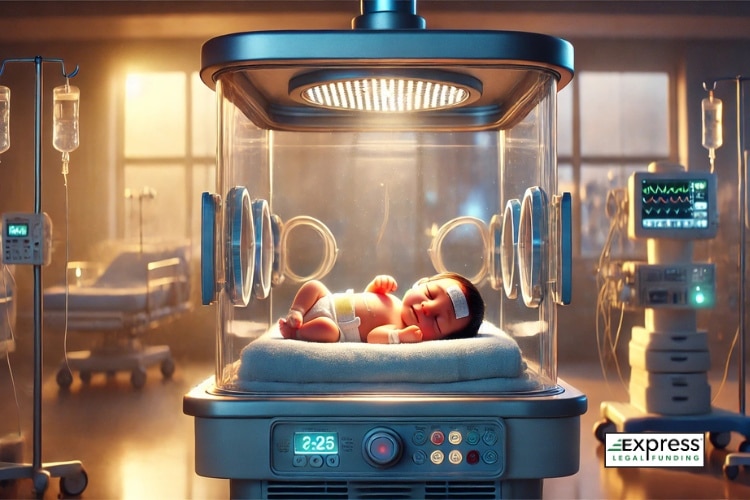
Common Examples of Birth Injuries
- Cerebral Palsy: Caused by lack of oxygen to the baby’s brain during delivery.
- Brachial Plexus Injuries: Nerve damage from improper handling during delivery.
- Maternal Injuries: Harm to the mother from improper use of delivery instruments or failure to manage complications.
Consequences of Birth Injuries for Patients
- Physical Disabilities: Long-term or permanent disabilities for the child, such as cerebral palsy.
- Emotional Distress: Anxiety, depression, and trauma for both the mother and family.
- Financial Burden: Increased medical bills, ongoing therapy, and special care needs.
- Reduced Quality of Life: Impact on the child’s ability to perform daily activities and the family’s overall well-being.
Who Is Liable in Birth Injury Claims?
In case of birth injuries, obstetricians are primarily held liable as they are responsible for managing labor and delivery and ensuring the safety of both mother and baby. Additionally, liability can extend to:
- Nurses and Midwives: Assisting in the delivery process and monitoring the mother and baby.
- Hospitals and Birthing Centers: Have vicarious liability and are responsible for providing a safe environment with adequate training and supervision.
Average Compensation for Birth Injuries
The national average compensation for settlements averages $500,000 to $1 million, particularly for permanent injuries like cerebral palsy. State-specific examples include:
- Texas: $750,000 – $1 million for significant economic damages, but non-economic damages are capped.
- Pennsylvania: $1 million – $3 million, frequently involving extensive future medical costs
Anesthesia Errors
Anesthesia errors occur when there are mistakes in administering anesthesia, which can result in serious complications. These errors can happen due to incorrect dosage, failure to monitor the patient, or allergic reactions to anesthesia.

Common Examples of Anesthesia Mistakes
- Incorrect Dosage: Administering too much or too little anesthesia prior to or during a procedure.
- Failure to Monitor: Not adequately monitoring the patient’s vital signs during surgery.
- Allergic Reactions: Failing to identify and manage allergic reactions to anesthesia.
Consequences of Anesthesia Errors for Patients
- Awareness During Surgery: Patients may wake up during the surgical procedure and experience pain and distress if anesthesia is insufficient.
- Adverse Reactions: Severe complications, including respiratory issues, brain damage, organ failure, or death.
- Post-operative Complications: Prolonged recovery, nausea, and other complications.
Who Is Liable in Anesthesia Error Claims?
The Anesthesiologist is primarily held liable in this case. They are responsible for administering anesthesia, taking into consideration the procedure requirement history of the patient, and monitoring throughout the procedure. Liability can also additionally extend to:
- Nurses and Surgical Staff: Assisting in the administration and monitoring process.
- Hospitals and Surgical Centers: For not providing proper training and ensuring safe practices.
Average Compensation for Anesthesia Errors
The national average compensation for this can often be $300,000 to $1 million, depending on the severity of harm. Examples of average settlements for anesthesia mistakes across various states include:
- Texas: Average settlements are around $400,000 or less due to non-economic caps.
- Massachusetts: $400,000 – $800,000, depending on the impact
Informed Consent Violations
Informed consent violations occur when healthcare providers fail to inform patients about the risks, benefits, and alternatives of a treatment or procedure, resulting in uninformed decisions.

Common Examples of Informed Consent Violations
- Lack of Information: Not providing sufficient information about the procedure.
- Failure to Warn of Risks: Not informing patients of potential risks and complications.
- No Consent Obtained: Performing procedures without obtaining the patient’s consent (consent of parent or legal guardian is required for minors before treatment).
Consequences of Informed Consent Violations for Patients
- Uninformed Decisions: Patients may undergo procedures without understanding the potential risks.
- Emotional Distress: Anxiety and loss of trust in medical professionals.
- Physical Harm: Complications from procedures that the patient may have declined if fully informed.
Who Is Liable in Informed Consent Violation Claims?
Physicians and surgeons who are responsible for obtaining informed consent from patients may be held the most liable. Additional liability may extend to hospitals and clinics for not ensuring proper consent procedures are followed by staff.
Average Compensation for Informed Consent Violations
The national average compensation for settlements ranges from $150,000 to $300,000, as they often hinge on lack of documentation rather than direct harm. Other examples include:
- Texas: Typically under $200,000 due to challenges in proving damages.
- Virginia: $100,000 – $300,000, often settled out of court.
Hospital-Acquired Infections
Hospital-acquired infections (HAIs) are infections that patients contract during their stay in a hospital, often due to poor hygiene practices or inadequate infection control measures.
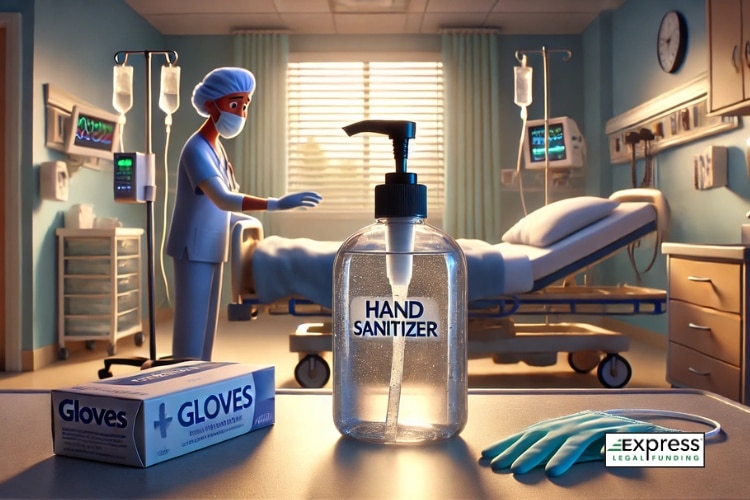
Common Types of Hospital-Acquired Infections
- MRSA (pronounced mur-sa): Methicillin-resistant Staphylococcus aureus, a type of bacterial infection.
- Sepsis: A severe infection that spreads throughout the body.
- Pneumonia: Lung infection contracted in the hospital.
Consequences of Hospital-Acquired Infections for Patients
- Prolonged Hospital Stay: Extended recovery time and additional treatments.
- Severe Health Complications: Potentially life-threatening conditions. Extreme cases can even result in fatality.
- Financial Burden: Increased medical expenses due to additional treatments.
Who Is Liable in Hospital-Acquired Infection Claims?
Hospitals and clinics are primarily liable for failing to maintain proper hygiene and infection control measures. Additional liability may extend to the staff on duty for not following infection control protocols.
Average Compensation for Hospital-Acquired Infections
The national average compensation for settlements ranges between $100,000 and $500,000, particularly for severe or fatal outcomes. Examples of average settlement ranges for hospital-acquired infections across various states include:
- Texas: Capped at $250,000 for non-economic damages; settlements depend on severity.
- Michigan: $250,000 – $500,000, especially for cases involving systemic failures
Defective Medical Devices
Defective medical devices refer to medical equipment that is faulty or improperly used, causing harm to patients. These devices can include a wide range of medical products, from pacemakers to hip implants.

Common Examples of Defective Medical Devices
- Faulty Pacemakers: Devices that fail to regulate heartbeats properly.
- Defective Hip or Knee Implants: Joint replacement implants that fail or cause complications.
- Malfunctioning Surgical Instruments: Tools that do not perform as intended.
Consequences of Defective Medical Devices For Patients
- Physical Harm: Pain, additional surgeries, and long-term health complications.
- Emotional Distress: Anxiety and loss of trust in medical devices.
- Financial Burden: Increased medical bills and rehabilitation expenses.
Who Is Liable in Defective Medical Device Claims?
Device manufacturers are primarily held liable for malfunctioning or defective medical devices under product liability laws. They are responsible for ensuring the safety, reliability, and efficacy of their equipment. In some cases, liability may also extend to:
- Healthcare Providers: For using defective devices or failing to recognize issues.
- Hospitals and Clinics: For not properly maintaining or inspecting medical devices.
Average Compensation for Defective Medical Devices
The national average compensation for settlements is around $500,000 – $2 million, higher for class-action cases. Examples of average settlement ranges for defective medical devices across various states include:
- Texas: $750,000 – $1 million in economic damages, with non-economic damages limited.
- California: Significant payouts ($1 million+) in individual cases involving critical harm.
Emergency Room Errors
Emergency room errors occur in the fast-paced environment of an emergency room, where mistakes can happen due to miscommunication, rushed decisions, or inadequate staffing.

Common Examples and Causes of Emergency Room Errors
- Misdiagnosis or Delayed Diagnosis: Incorrect or delayed identification of a condition.
- Medication Errors: Mistakes in prescribing or administering medication.
- Poor Communication: Misunderstandings among ER staff.
- Failure to Properly Triage: Not prioritizing patients based on the severity of their condition.
Consequences of Emergency Room Errors for Patients
- Worsening Condition: Delays or errors in treatment can lead to severe health issues.
- Emotional Distress: Anxiety, loss of trust in emergency care, hesitancy to seek emergency treatment.
- Financial Burden: Increased medical expenses due to additional treatments.
Who Is Liable in Emergency Room Mistake Claims?
ER Physicians followed by nurses are most liable for causing ER errors. They are responsible for diagnosing and treating patients in the ER without missing critical information.
Hospitals may also be held accountable under the legal principles of vicarious liability, which holds them responsible for the actions of their staff, or corporate negligence, for failing to provide adequate staffing, training, and effective communication protocols.
Average Compensation for Emergency Room Errors
The national average compensation for settlements varies between $300,000 – $700,000, reflecting the critical nature of ER mistakes. Examples of average settlement ranges for emergency room errors across various states include:
- Texas: Often around $250,000 due to strict burdens of proof under state law.
- Florida: $400,000 – $1 million for severe triage errors
Poor Post- or Pre-Operative Care Negligence
Poor post- or pre-operative negligence care refers to inadequate medical care provided before or after surgery, which can lead to complications and prolonged recovery.
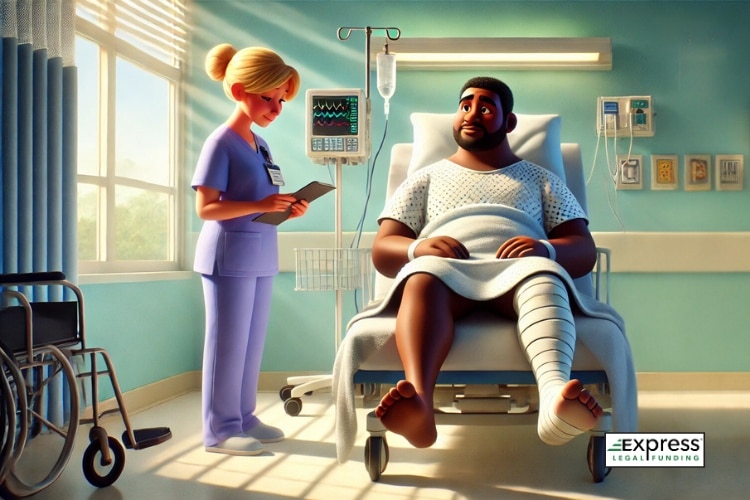
Common Example and Causes of Post- or Pre-Operative Care Negligence
- Inadequate Monitoring: Failing to monitor the patient’s recovery or condition before surgery.
- Failure to Provide Follow-Up Care: Not providing necessary follow-up appointments or instructions.
- Infections: Resulting from poor hygiene practices or inadequate wound care.
Consequences of Post- or Pre-Operative Care Errors for Patients
- Prolonged Recovery: Extended healing time and additional treatments.
- Severe Health Complications: Infections or other issues arising from poor care.
- Emotional Distress: Anxiety and loss of trust in medical professionals.
Who Is Liable in Post- or Pre-Operative Care Negligence Claims?
Surgeons, Physicians, Nurses, and Medical Staff: These healthcare professionals share responsibility for ensuring proper pre- and post-operative care, including monitoring patients and addressing potential complications throughout recovery. When they fail to meet these responsibilities, they can be held liable for negligence that results in patient harm.
Average Compensation for Post- or Pre-Operative Negligence
The national average compensation for pre and post-operative negligence settlements is around 200,000 – $500,000. Examples of average settlement ranges for post- and pre-operative medical malpractice claims across various states include:
- Texas: Typically capped at $250,000 for non-economic damages; economic damages vary.
- Washington: $250,000 – $600,000, influenced by long-term rehabilitation needs
Notable Medical Malpractice Cases in the US
Here are notable medical malpractice cases, including a brief description of each case, the type of malpractice involved, and any settlements or verdicts:
Libby Zion Case (1984)

- Summary: Libby Zion, an 18-year-old college student, died due to a combination of a misdiagnosed infection and a fatal drug interaction.
- Type of Case: Misdiagnosis and medication error.
- Settlement: The case led to significant changes in medical residency work hours and supervision, but the family settled for an undisclosed amount.
Willie King Case (1995)

Summary: Willie King, a 51 year-old-man with diabetes, had the wrong leg amputated during surgery.
Type of Case: Surgical error.
Settlement: King received a $1.15 million settlement from the hospital and $250,000 from the surgeon.
Jesica Santillan Case (2003)
- Summary: Jesica Santillan, a 17-year-old girl, died after receiving a heart and lung transplant with organs of the wrong blood type.
- Type of Case: Transplant error.
- Settlement: The family settled with Duke University Medical Center for an undisclosed amount.
Dennis Quaid Twins Case (2007)
- Summary: Actor Dennis Quaid’s newborn twins were given an overdose of the blood thinner Heparin at Cedars-Sinai Hospital in Los Angeles. The twins recovered within a week.
- Type of Case: Medication error.
- Settlement: The hospital settled for $750,000.
Michael Jackson Case (2009)
- Summary: Pop star Michael Jackson died from an overdose of the anesthetic propofol, administered by his personal physician.
- Type of Case: Medication error and negligence (criminal and civil).
- Conviction: Dr. Conrad Murray was convicted of involuntary manslaughter and sentenced to four years in prison.
- No Settlement: The Jackson family lost their $1.5 billion wrongful death lawsuit against AEG Live, the entertainment company that hired Dr. Conrad Murray.
John Ritter Case (2003)

- Summary: Actor John Ritter died from an aortic dissection that was misdiagnosed as a heart attack.
- Type of Case: Misdiagnosis.
- Settlement: The family received a $14 million settlement from the hospital and radiologist.
Dana Carvey Case (1998)
- Summary: Comedian Dana Carvey underwent heart surgery, but the surgeon operated on the wrong artery.
- Type of Case: Surgical error.
- Settlement: Carvey received a $7.5 million settlement.
Joan Rivers Case (2014)

- Summary: Comedian Joan Rivers died from complications during a routine endoscopy.
- Type of Case: Anesthesia error and negligence.
- Settlement: The family settled their wrongful death claim with the clinic for an undisclosed amount.
Thomas Eric Duncan Case (2014)
- Summary: Thomas Eric Duncan, the first person diagnosed with Ebola in the US, died after being initially misdiagnosed and sent home from the hospital.
- Type of Case: Misdiagnosis.
- Settlement: The family settled with Texas Health Presbyterian Hospital for an undisclosed amount.
These real-life cases highlight the devastating consequences of medical negligence. If you believe you’ve experienced something similar, understanding the steps to file a medical malpractice lawsuit is critical.
How to File a Medical Malpractice Lawsuit: A Step-by-Step Guide for Patients

Filing a medical malpractice lawsuit can be a complex and daunting process, but understanding the steps involved can help you navigate it effectively. Here’s a breakdown tailored to patients:
1. Determine If You Have a Case
- Understand Malpractice: To qualify as malpractice, a healthcare provider’s negligence must directly cause harm or personal injury. This means their actions deviated from the standard of care expected in similar circumstances.
- Key Elements: Establish these four elements:
- A doctor-patient relationship existed.
- The provider was negligent.
- The negligence caused your injury.
- The injury resulted in significant damages (e.g., medical costs, lost income, pain and suffering).
2. Gather Evidence
- Obtain Medical Records: Request your complete medical history and records from all providers involved.
- Document Everything: Keep detailed notes of your symptoms, treatments, and any additional medical expenses or time lost from work.
- Witness Accounts: Gather statements from witnesses, including other healthcare professionals who may support your claim.
3. Consult a Medical Malpractice Attorney
- Retain Legal Counsel: Hire an attorney specializing in medical malpractice to assess your case and guide you through the legal process.
- Case Evaluation: Many attorneys offer free consultations to evaluate the strength of your claim.
- Understand Costs: Most medical malpractice lawyers work on a contingency fee basis, meaning they only get paid if you win (recover money from your claim).
4. Obtain a Medical Expert’s Opinion
- Expert Affidavit: Most states require a qualified medical expert to review your case and provide a sworn affidavit confirming that malpractice likely occurred.
- Strengthen Your Case: A medical expert’s testimony is often critical for demonstrating how the standard of care was violated.
5. File the Medical Malpractice Lawsuit
- File the Complaint: Your attorney will draft and file a formal complaint in the appropriate court, detailing the allegations and damages sought.
- Notify Defendants: The healthcare provider(s) and any involved parties will be served with legal documents notifying them of the lawsuit.
6. Navigate the Pre-Trial Process
- Discovery Phase: Both sides exchange evidence, depose witnesses, and gather information to build their cases.
- Settlement Negotiations: Many medical malpractice cases are resolved through settlements before going to trial. Your attorney will negotiate on your behalf.
7. Prepare for Trial (If Necessary)
- Court Proceedings: If a settlement isn’t reached, your case will proceed to trial. This involves presenting evidence, expert testimonies, and arguments before a judge or jury.
- Verdict and Compensation: If the court rules in your favor, you’ll be awarded compensation for your damages.
8. Receive Compensation
- Types of Damages: Compensation may include:
- Medical expenses
- Lost wages
- Pain and suffering
- Punitive damages in cases of gross negligence
9. Know the Statute of Limitations
- State-Specific Deadlines: Each state has a specific time limit for filing a medical malpractice claim. Missing the deadline may forfeit your right to pursue legal compensation. Consult your attorney to ensure compliance.
How Express Legal Funding Can Help With Medical Malpractice Cases and Claims
Medical malpractice cases can be lengthy and expensive, often causing significant financial strain on plaintiffs due to mounting medical bills, lost wages, and other related expenses. We understand this and can do our part to help you out.
Express Legal Funding provides pre-settlement funding, offering non-recourse cash advances to plaintiffs. This means that you only repay the advance if you win the case. This financial support helps cover living expenses and medical costs during the litigation process, allowing you to focus on recovery and legal battles without the added stress of financial worries.

Here’s how we help you during this journey for justice:
Avoid Lowball Settlement Offers
- Insurance companies may offer low settlements to plaintiffs who are under financial pressure, hoping they will accept the offer out of necessity.
- With financial backing from Express Legal Funding, you can afford to wait for a fair settlement rather than accepting a low offer.
- This ensures you receive the compensation they deserve for their suffering and losses.
Non-Recourse Funding
- Non-recourse funding means you owe nothing to the funding company if you lose the case.
- This is one of the significant benefits of pre-settlement funding from us.
- This reduces your financial risk, providing peace of mind and allowing you to pursue your case without the fear of incurring additional debt.
Quick Access to Funds
- Traditional loans often require collateral and can take time to process. You may need immediate financial assistance.
- Express Legal Funding provides quick access to funds, often within 24-48 hours, ensuring that you can meet your immediate financial needs.
- This rapid access to cash can be crucial for covering urgent expenses such as medical bills, rent, and daily living costs.
Supporting Various Types of Medical Malpractice Lawsuits
- Medical malpractice cases can vary widely, including surgical errors, misdiagnosis, medication errors, and more.
- Express Legal Funding supports a wide range of medical malpractice claims, offering financial assistance tailored to the specific needs of each case.
- This flexibility ensures that you can receive the support you need for your specific type of medical malpractice case.
No Credit Checks Required
- If you have poor credit, you may struggle to secure traditional loans. Express Legal Funding does not require credit checks, making it accessible to you regardless of your credit history.
- This inclusivity ensures that you, regardless of your financial background, can access the funding you need to keep the lights on and have food on the table while you pursue your case.
Transparent Terms and Conditions
- Legal financing can sometimes come with hidden fees and complex terms.
- Express Legal Funding offers clear and transparent terms, ensuring you understand the agreement and feel confident in your decision.
- This transparency builds trust and ensures that you are fully aware of the terms of your pre-settlement funding agreement.
Expertise in Consumer Legal Funding
- Navigating the pre-settlement funding landscape can be challenging without proper guidance.
- Express Legal Funding has expertise in pre-settlement funding and lawsuit loans, providing you with knowledgeable support and advice throughout the process. This support helps you make informed decisions about your funding options.
Medical Malpractice Case Types: Key Insights and Final Thoughts
Understanding medical malpractice is not just about recognizing medical errors; it’s about empowering patients, families, and even healthcare professionals to take informed action. The knowledge of the most common types of malpractice and the potential damages that can be claimed for them is critical for protecting your rights and ensuring accountability in the healthcare system.
If you or someone you know has been affected by medical negligence, it’s essential to explore your legal options. Taking action without delay can make a significant difference in seeking justice and compensation for your suffering.
At Express Legal Funding, we are here to help you navigate the financial challenges of a medical malpractice claim. By providing pre-settlement funding, we ensure you have the financial support needed to pursue your case without undue stress. Whether it’s medical bills, lost wages, or daily expenses, we can help ease your burden so you can focus on recovery and achieving a fair settlement.
FAQs on Medical Malpractice Cases
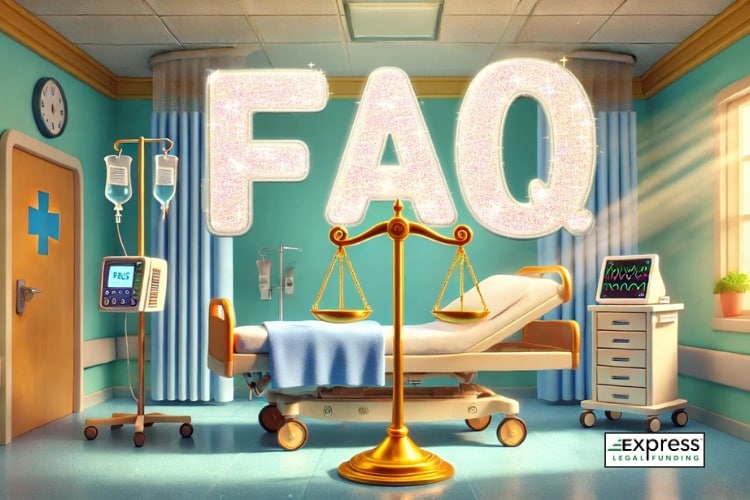
What qualifies as medical malpractice?
Medical malpractice occurs when a healthcare provider’s negligence directly causes harm or injury to a patient. This means their actions deviated from the standard of care expected in similar circumstances. Key elements include a doctor-patient relationship, provider negligence, causation of injury, and significant damages resulting from the injury.
How do I know if I have a valid medical malpractice case?
To determine if you have a valid medical malpractice case, you need to establish the following:
- A doctor-patient relationship existed.
- The healthcare provider was negligent.
- The negligence caused your injury.
- The injury resulted in significant damages, such as medical costs, lost income, or pain and suffering.
Consulting with a medical malpractice attorney can help you assess the strength of your case.
What are the most common types of medical malpractice?
Common types of medical malpractice include:
- Misdiagnosis or delayed diagnosis
- Surgical errors
- Medication errors
- Birth injuries
- Anesthesia errors
- Failure to treat
- Hospital-acquired infections
How much compensation can I receive for a medical malpractice case?
The amount of compensation you can receive depends on various factors, including the severity of your injury, the extent of your damages (medical expenses, lost wages, pain and suffering), and the specifics of your case. Compensation may also include punitive damages in cases of gross negligence.
What is the statute of limitations for medical malpractice lawsuits?
The statute of limitations for medical malpractice lawsuits varies by state. It is the specific time limit within which you must file your claim. Missing this deadline may forfeit your right to pursue compensation. Consult with an attorney to ensure compliance with your state’s statute of limitations.
Can I file a lawsuit for hospital-acquired infections?
Yes, you can file a lawsuit for hospital-acquired infections if you can prove that the infection resulted from the hospital’s negligence or failure to follow proper protocols. This may include inadequate sterilization, poor hygiene practices, or failure to monitor and treat infections promptly.
What should I do if I suspect medical malpractice?
If you suspect medical malpractice, take the following steps:
- Obtain your medical records and document everything related to your treatment.
- Consult with a medical malpractice attorney to evaluate your case.
- Gather witness statements and any additional evidence that supports your claim.
- Follow your attorney’s guidance throughout the legal process.
Do all medical malpractice cases go to trial?
No, not all medical malpractice cases go to trial. Many cases are resolved through settlements before reaching the trial stage. Settlement negotiations can help both parties avoid the time and expense of a trial. However, if a settlement cannot be reached, the case may proceed to trial.
How long does it take to resolve a medical malpractice case?
The time it takes to resolve a medical malpractice case varies widely. It can take several months to several years, depending on the complexity of the case, the willingness of both parties to settle, and the court’s schedule.
Your attorney can provide a more accurate timeline based on the specifics of your case.
How can Express Legal Funding help with medical malpractice cases?
Express Legal Funding can provide financial assistance to plaintiffs involved in medical malpractice cases. They offer pre-settlement funding, which helps cover living expenses, medical bills, and other costs while you await the resolution of your case. This can alleviate financial pressure and allow you to focus on your recovery and legal proceedings.
Ready to learn more?
Explore our additional resources on medical malpractice on our company blog, or apply with us directly for pre-settlement funding assistance tailored to your needs. Your journey to justice begins with the proper support.


